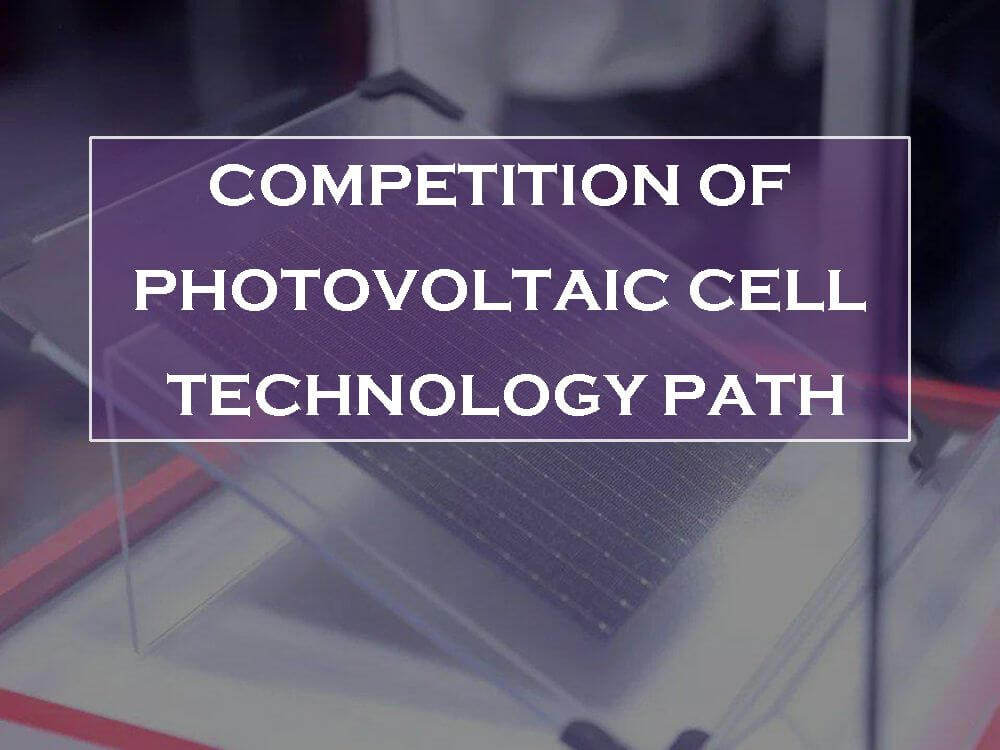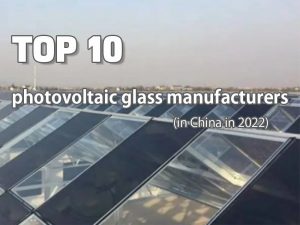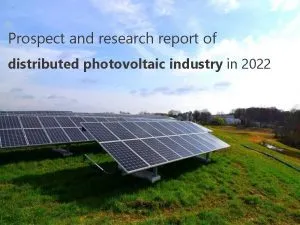Competition of photovoltaic cell technology paths
In 1941, the first monocrystalline silicon solar cell was born; in the 1950s, Bell Laboratories launched the first commercially available photovoltaic cell with a conversion efficiency of 6%. So far, the development history of photovoltaic cells has exceeded 80 years. Recently, Chinese photovoltaic enterprises have once again left a strong mark in history.
LONGi solar cells breaks the world record
On November 19th, at the 16th China New Energy International Expo and Summit Forum, as one of the top 10 HJT solar cell manufacturers in China LONGi Green Energy announced that it has received the latest certification report from the Institute of Solar Energy Research Hamelin (ISFH), Germany. The conversion efficiency of silicon heterojunction cells independently developed by LONGi Green Energy reaches 26.81%.
“Father of the world’s solar energy” Martin Green announced that this is currently the highest efficiency record for silicon-based solar cells in the world. It is also the latest world record that was born after five years since the Japanese company set a record of 26.7% in 2017.
Xu Xixiang, vice president of LONGi Green Energy Central Research Institute said, in 2017, the Japanese company Kaneka created a single crystal silicon cell efficiency record of 26.7%, which was broken by the composite technology of heterojunction + IBC.
The new record of LONGi Green Energy uses heterojunction technology, increasing from 24.7% and 25.1% to 26.81%. Xu Xixiang said that LONGi is also working on heterojunction + IBC technology, and the efficiency will be further improved in the future. In addition to heterojunction (HJT) cells, LONGi has also made remarkable achievements in technical paths such as PERC and HPBC.
Currently, the world record for conversion efficiency of mainstream PERC cells in the photovoltaic industry is 24.05% set by LONGi Green Energy, which is very close to the laboratory efficiency limit of 24.5% for ISFH;
At the beginning of this month, LONGi Green Energy also released photovoltaic module products equipped with HPBC technology. At present, the efficiency of mass production has exceeded 25%. The PRO version with hydrogen passivation technology has an efficiency of 25.3%, which has exceeded the laboratory efficiency of PERC cells.
Conversion efficiency – the ruler of technology iteration
Photovoltaic cell conversion efficiency is the most critical yardstick for each iteration of photovoltaic technology. Judging from the record set by LONGi, the absolute value of each increase is not large, but the impact on the downstream of the industrial chain is particularly significant.
On the basis of 20% conversion efficiency, it is not easy to increase the efficiency by 1%. From 2017 to the present, the efficiency of PERC cells has only increased from about 20.5% to about 23.5% now. Photovoltaic cost reduction, there are methods such as thinning silicon wafers and reducing the use of silver paste, which are reductions.
The more critical way is to increase. Increment means that after the battery efficiency is improved, the cost can naturally decrease. Specifically, improving cell efficiency may make processing more expensive, but it lowers processing costs for all other parts. Specifically, on the basis of 20%, every percentage point increase in conversion efficiency can save more than 5% of the cost of downstream power stations, and the effect is huge. Therefore, for higher conversion efficiency, even if it is only increased by 0.01%, photovoltaic companies have always strived for it.
Li Zhenguo, founder and president of LONGi Green Energy, said that the next-generation photovoltaic cell technology, whether it is TOPCon, HPBC, HJT, including some integration and hybridization of these technologies, mass production efficiency of 26% to 27% will be achieved in about three years.
For the ultimate product of single-junction photovoltaics, mass production should approach the conversion efficiency of 27%. At the same time, in the next 5-10 years, there is also room for development of double-junction cells, which may reach 40% experimental conversion efficiency and 30%-35% mass production efficiency.
Photovoltaic battery technology path comparison
As Li Zhenguo said, 2022 is the first year of the outbreak of N-type batteries, and the development of next-generation photovoltaic battery technologies such as TOPCon, HJT, and IBC is in full swing.
Compared with traditional P-type batteries, these N-type batteries have the advantages of high conversion efficiency, high bifaciality, and low temperature coefficient, but the manufacturing process is complicated and the cost is higher. It is generally considered by the industry to be the next-generation battery technology.
Today, the mainstream P-type monocrystalline PERC cell is still the most economical technology in the photovoltaic power generation industry, but its mass production efficiency has approached its theoretical limit of 24.5%, and it is difficult to increase it significantly.
Some people are working on today’s technology, but tomorrow’s technology has to be taken seriously, and among the popular options such as TOPCon, HJT, and IBC, who can stand out and replace PERC and become the mainstream?
From the above comparison, we can see that in the current N-type battery track, TOPCon wins in the present, while HJT wins in the future. To a certain extent, it highly summarizes the current situation. The reason why TOPCon batteries are popular in the short term is that the production line can be directly improved from the PERC production line, and the economic benefits are higher.
It is estimated that domestic TOPCon battery production capacity will be close to 200GW in 2023, and shipments are expected to exceed 100GW. From a longer-term perspective, the disruptive innovative technology represented by HJT, its process is simpler, and the cost reduction path of industrialization is clear and clear, and there is a lot of room for efficiency improvement in the future, but the high cost of incompatibility with PERC production lines makes it insufficient in short-term competitiveness.
At present, most of the HJT battery production lines are still mainly small-scale. This time LONGi’s new world record may mean that HJT batteries are expected to achieve mass production within 2-3 years. It is predicted that the total production capacity of the HJT battery project will exceed 150GW.
However, IBC battery is a platform-type long-term battery technology route, and it is still difficult to achieve mass production in China. At the same time, the classic IBC efficiency premium is difficult to cover the cost premium, and the TBC and HBC paths combined with TOPCon and HJT are expected to attract industrial transformation.
At present, there are not a few Chinese companies deploying IBC batteries, such as LONGi Green Energy, Aiko, one of the photovoltaic module manufacturers in China Trina Solar, Jolywood, and one of the solar battery manufacturers in China JA Solar, etc. It is expected that a small amount of production capacity will be implemented this year. Going one step further, the future of photovoltaic technology is much more than “silicon”. The current mainstream single-junction battery has a limited upper limit, and the double-junction battery has more space.
Looking forward to the frontier of technology, the conversion efficiency of perovskite cells and gallium arsenide multi-junction thin-film cells is higher than that of current mass production technologies. The conversion efficiency of perovskite-crystalline silicon stacked cells and gallium arsenide multi-junction cells exceeds 30%, which are also technical directions worthy of attention.
With reference to historical experience and industry development laws, whether choosing TOPCon, HJT or other photovoltaic cell technical paths, the investment of N-type batteries by various market players is not only in line with the trend of technological change, it is also hoped to occupy a more favorable position in the potential industry seat reshuffle. There is no right or wrong in technology itself, and it will eventually be industrialized.



























